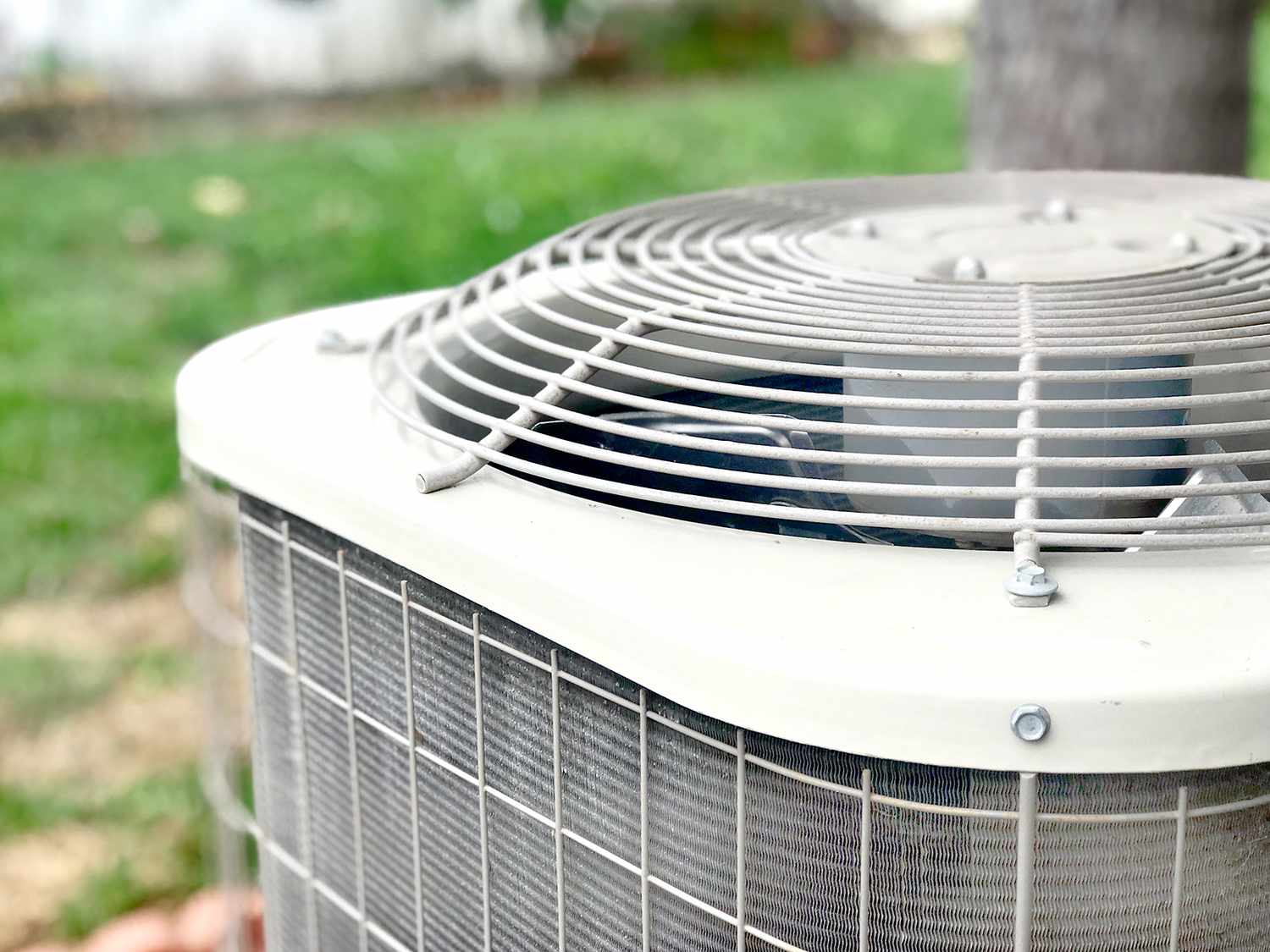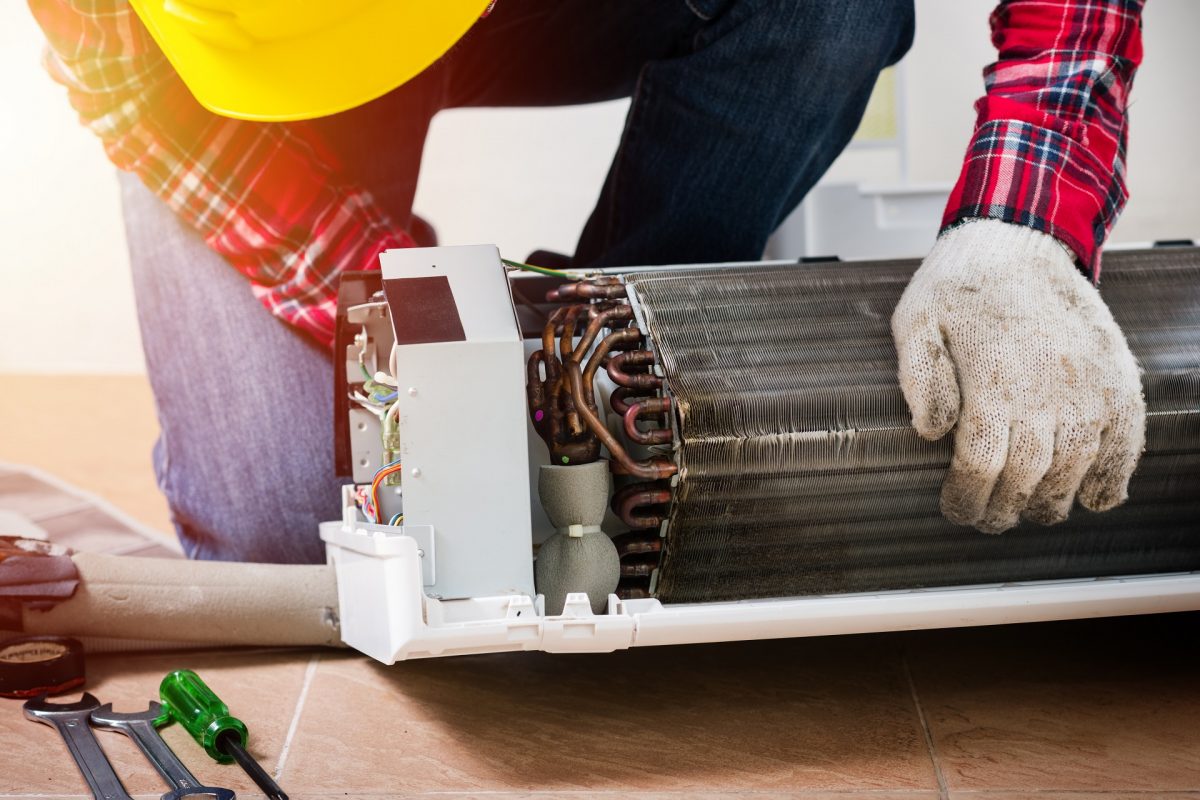The component in your air conditioning unit that absorbs the heat from the air inside of your house is known as an evaporator coil. Working with other parts of the AC unit, the evaporator coil is one of the unsung heroes that keep your home cool during scorching summer days.
The least you can do to keep it in good condition is a thorough cleaning process!
Stage 1: Getting The Air Handling Unit Ready

Turn off the A/C system and disconnect the power to the air handler. Air handler units are frequently found inside, in a closet or attic. Toggling the toggle switch at the air handler will turn off the power to the air handler (the switch resembles a light switch). If you are unable to locate the toggle switch, turn off the power at the circuit breaker.
Remove The Air Handler Unit’s Access Panel
Socket wrenches, nut drivers, and screwdrivers can be used to remove screws and other fasteners from the panel. If there is tape or reflective metal foil at the panel borders, it should be removed as well.
Find The Evaporator Coils
These are often located on the air intake side of the fan coil or the furnace’s outlet side. Coils are often composed of copper, steel, or aluminum and are formed up of tubes bent in U-shapes and arranged into an A-frame design with two panels. These panels are lined with fins, which are thin bits of metal.
Stage 2: Making Use Of A Pump Sprayer And A Brush
Invest On A Pump Sprayer, Professional Cleaning Solution, And A Brush
A professional-grade alkaline cleaning solution for evaporator coils will release dirt and mold from inside the coils, while the spray wand will reach the unit’s tiny areas and the bench brush will grasp and hook debris inside the unit.
Spray The Coils With The Cleaning Solution
To make the cleaning solution, follow the manufacturer’s instructions. For a normal cleaning, 1 US gal (3.8 L) of spray should enough. The spray wand should be set to a narrow.25 in (0.64 cm) spray, but not so forcefully that the jet bends the coil fins. This is usually a problem with pump sprayers that are greater than 2 US gal (7.6 L).
Brush The Coils, Often Rinsing The Brush
To guarantee that no remaining chemicals or dirt are introduced to the coils, rinse the brush in a new pail of clean water. The brush removes bits of dirt and debris that the spray cannot remove. Brushing over the fins might cause them to fold and bend. As a result, air movement will be obstructed.
Reattach The Evaporator Coil Access Panel And Use Hvac Tape To Seal It
The metal foil tape should be applied to the panel’s top and bottom seams. Do not tape over the manufacturer’s label on the access panel, since service professionals may require that information later.
Stage 3: Using Mild Detergents And Water To Clean

In A Spray Bottle, Combine Warm Water And Dishwashing Soap
Only a few drops of detergent should be used, and it should not be overly acidic. Acidic cleansers can corrode the copper and other metals used in the coil, shortening its life. A hand sprayer or garden sprayer can also be used.
Then, spray the evaporator coils with the water/detergent solution. Allow the solution to soak in for a few seconds to a few minutes to dislodge particles. If necessary, reapply. You may either let the coil drain naturally or lightly clean it with water.
With A Soft Cloth Or Brush, Remove Any Loose Material
Avoid bumping the A-fins, frame’s since this may cause them to bend. If you want to wipe the fins, never wipe them horizontally, since this may cause them to fold and eventually restrict air passage.
Stage 4: Using Commercial Cleaners To Spray
Directly Spray The Cleaning On The Coils
Surfaces should be uniformly and completely coated. It’s preferable to do this on a hot day when the A/C has already been turned on. This will assist in rinsing the coils with condensate water.
Repeat The Cleaning Process
This procedure should be repeated until the coils are clean and free of buildup. Before adding extra cleaner, wait until the cleaner has liquified the particles and has drained away.

